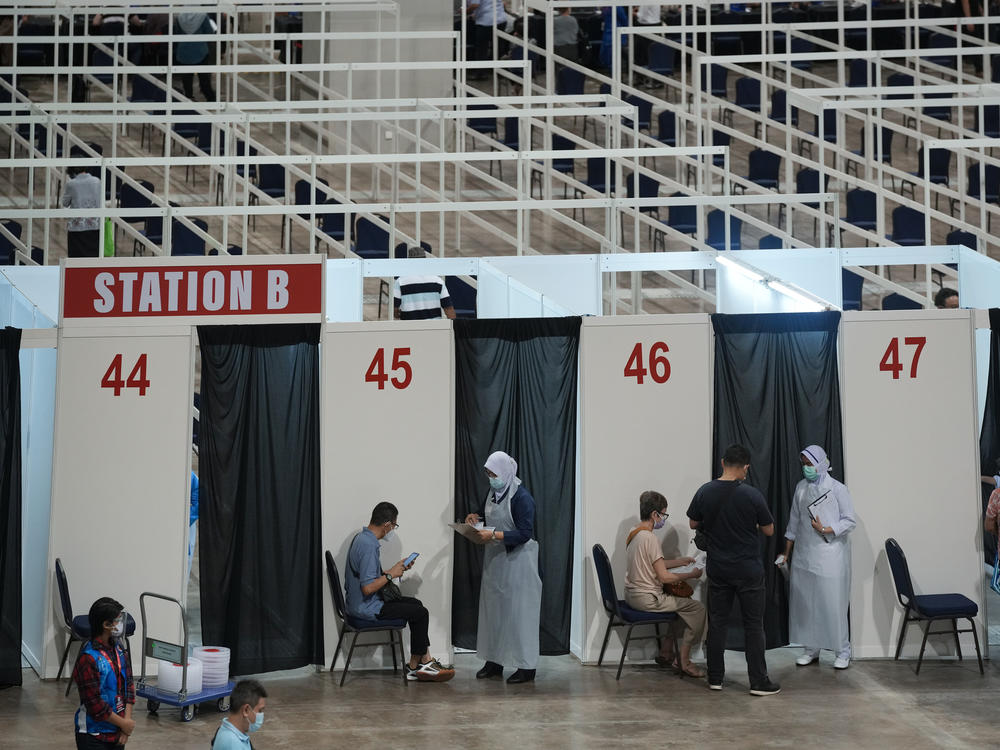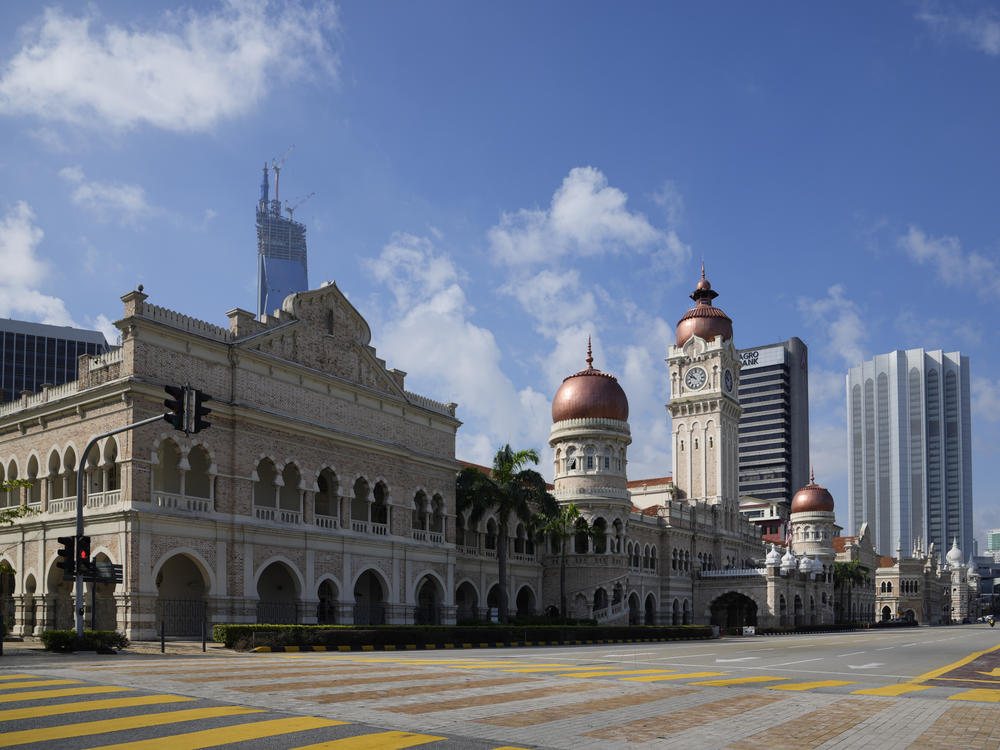Section Branding
Header Content
Malaysia's Recent Surge In COVID Infections Leads To A New Lockdown And New Worries
Primary Content
In Southeast Asia, the coronavirus is gathering pace, with dangerous new outbreaks in Malaysia and Vietnam. Both these countries had managed to avoid the worst of the pandemic in 2020.
In Malaysia, the surge in cases follows exponential growth that began in early April. Cases have risen by more than 60% in the past 14 days.
Friday alone saw more than 8,200 confirmed new cases of infection, pushing the country's tally to more than 603,100, a five-fold increase since the start of the year.
Munir Majid, whose independent think tank CARI ASEAN Research and Advocacy focuses on Southeast Asian countries, notes that in terms of new cases per million, Malaysia's infections are "higher than even India['s]."
As of June 2, Malaysia's rolling seven-day average translated to 237.45 cases per million people, compared with India's 111.06 cases per million.
No longer a "shining example"
The current spike marks a dramatic shift for Malaysia. Kuala Lumpur-based political analyst James Chai says the country has gone from a "shining example of handling the pandemic and suppressing it to single digits on a daily basis" to now having the fastest-growing COVID-19 outbreak in all of Southeast Asia.
Its new daily case numbers are outpacing those of Indonesia and the Philippines, the countries with the region's worst outbreaks.
The country's health director-general, Dr. Noor Hisham Abdullah, warned Sunday that demand for intensive care unit beds is overwhelming the system and that they are over capacity at 104%. The health chief said the worsening outbreak may force doctors to make the "difficult choice" of who lives and who dies, allotting intensive care beds to patients with a higher probability of survival.
More than 1,200 Malaysians perished from COVID-19 in May, nearly three times the 471 coronavirus-related deaths in all of 2020. On Tuesday, 126 patients died, "which, for a small country, is huge," notes Majid.
Volunteer undertakers who prepare the deceased for Muslim burial report handling "nearly 30 times more bodies" than last year, Chai says.
On Tuesday, the country began a two-week lockdown to try and flatten the infection curve. Kuala Lumpur's streets are unusually empty. But many businesses, including factories, have been allowed to operate at 60% capacity, generating "a lot of debate and bitterness," Majid says.
"Some people are saying, 'What lockdown, when you allow 92,000 companies to continue to operate?' And so many workers continue to go to work," he says.
Internal bickering has created confusion in the government's messaging, says Chai. Prime Minister Muhyiddin Yassin's administration is reeling from grievances ranging from vaccine appointment complaints to double standards in enforcing restrictions.
Chai has noticed the phrase kerajaan gagal, "failed state," popping up on social media, an unusually blunt expression for Malaysians who he says usually communicate more indirectly.
"Some of the ministers are not up to the job," Majid says. He believes overhauling the cabinet and forming a government of "national unity" would help restore public trust.
If enforcement of safety protocols has been lackadaisical, Malaysians have also been complacent, he says.
In the Muslim-majority country, mass religious festivals appear to have contributed to the recent wave of cases. And despite official orders against doing so, thousands traveled in May to celebrate Eid, the holiday marking the end of the holy month of Ramadan.
"They went on back roads ... to avoid the police roadblocks to join families," Majid says. When they returned, infections spread.
Vietnam's new cases
Elsewhere in Southeast Asia, other countries that were previously able to keep infection numbers low have also been struggling.
Vietnam, largely a success story in preventing the spread of the virus, is now battling clusters in the commercial capital of Ho Chi Minh City and in two northern provinces. Authorities this week locked down much of Ho Chi Minh City and plan to test all its 9 million residents.
On Friday, Vietnam reported more than 130 new cases nationwide.
Since the end of April, infection has spread across more than two dozen municipalities and provinces, leading to over 5,000 confirmed cases — double the total number that the country reported from the beginning of the pandemic until late April.
Vietnamese health authorities suggested the country might be seeing a new hybrid variant of the coronavirus, but the World Health Organization determined it is a mutation to the Delta variant identified in India.
With just about 1% of its 100 million people having received at least one dose of vaccine, Vietnam has been struggling to ramp up inoculations. Hanoi is pressing for suspension of international patents on vaccines to speed up production, and Friday announced plans for a $1.1 billion public fund to finance 150 million doses.
Vaccine shortages are crippling the Philippines' efforts to contain the pandemic. Only 1.3 million of 9.4 million seniors have received shots so far. And researchers say that 50% of vaccine recipients are failing to come back for their second doses.
With more than 1.2 million confirmed coronavirus cases, the Philippines has the second-worst outbreak in Southeast Asia after Indonesia, which has more than 1.8 million cases. The Philippines' painstakingly slow vaccine rollout makes the goal of year-end herd immunity for its 110 million people a dim prospect.
Copyright 2021 NPR. To see more, visit https://www.npr.org.


